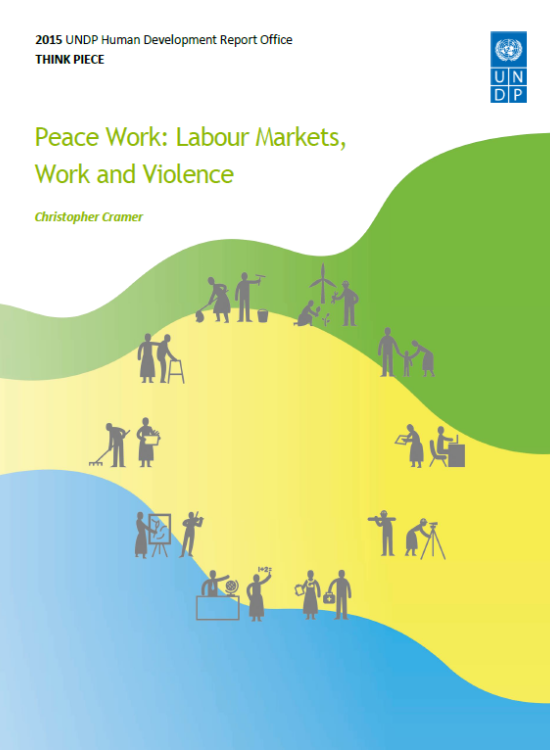Peace Work: Labour Markets, Work and Violence

Download Report by Language
Document
cramerhdr2015final.pdf
(705.95 KB)
Citation
Christopher Cramer . 2015. Peace Work: Labour Markets, Work and Violence. New York.
Peace Work: Labour Markets, Work and Violence
Posted on: January 01, 2015
Violence in its many forms—physical, psychological, structural—has profound and complex effects on socioeconomic development. If human development is regarded as the expansion of freedoms, then violence has pervasive restricting impacts on these that go far beyond the obvious damage inflicted by warfare.
Urban livelihoods for young girls who drew a kind of infographic classification scheme for the range of insecurities they feel in districts of Bogotá (Moser and McIlwhaine 2000) are cramped by threats from gangs, rape, street fights, drunks and more. The freedoms available to members of (often violent) gangs in East Harlem described in Bourgois (2003) are severally curtailed by violence: by the structural violence of changing labour markets that have emptied out older and some argue more rewarding forms of work; by a history of exclusion by and violence from earlier immigrant arrivals; and daily by often vicious harassment by police officers. One of the gang members, Caesar, talking about witnessing police brutality puts it this way: “That’s stress management right there. That’s release of tension. That’s my-wife-treated-me-dirty-you’ll-pay. That’s terrorism with a badge. That’s what that is” (Bourgois 2003, p. 36). Institutional violence by police—an institutional framework in which police employees arrogate to themselves weakly regulated violence rights—is a common feature of many parts of the world.